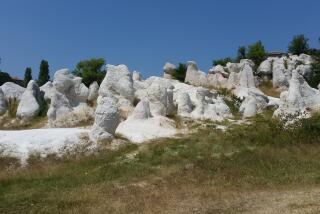‘The Secret Life of Emily Dickinson’ by Jerome Charyn
Whether they’re true or not, myths and legends that surround poets help us to see their work in a comprehensible context. Say the names Keats, Poe or Plath, for instance, and images of consumption, drug addiction and mental illness may come to mind, just as the image of 19th century poet Emily Dickinson as an eccentric recluse has persisted largely based on her poetry and a few scraps of biographical information. Slim pickings for a biographical novel, yet the attraction of Dickinson’s poetry for Jerome Charyn inspired him to attempt to put flesh on those mythical bones in his novel “The Secret Life of Emily Dickinson.”
Charyn brings to the task more than a writer’s indebtedness to the inspirational “old maid of Amherst.” Proved adept over a career spanning 30 years at breathing new life into literary genres and eras of American history, Charyn’s work includes the streets of New York with Isaac Sidel, a Jewish deputy police commissioner, and a picaresque take on the American Revolution in 2008’s “Johnny One-Eye.” But enlivening Dickinson, with her plain looks, idiosyncratic imagery and reclusive reputation, is more than a notion.
Though he draws on Dickinson biographies, family correspondence and his research into the events of the day, Charyn excels most at drawing from Dickinson’s rich poetic legacy to trace the ebb and flow of her life. One line of poetry -- “A Wounded Deer leaps highest” -- becomes a seminal image connected to Tom, a fictional blond handyman at Mount Holyoke Female Seminary, which Dickinson attended in 1847 and 1848. Charyn portrays Emily as a 17-year-old with nascent sexual desires; of Tom, she says, “I’m ashamed to describe the electricity of my contact with his raw, red skin -- my cheeks are ablaze with the delight of it.”
Her lifelong obsession with Tom, the “blond assassin” of her soul (and a phrase in another poem), persists despite his fall into a life of crime, and this colors their sexually charged, albeit intermittent, encounters.
Charyn reveals other crushes and suitors as well: real characters like George Gould, an Amherst College classmate of Emily’s brother Austin, who published one of her poetic “geegaws” in the college magazine and who was purported to have been engaged to the young poet. Charyn also creates Brainard Rowe, a tutor from Yale teaching at Amherst whom Emily meets at a “rum resort” on the shady side of town and with whom she attempts to elope, only to be turned back at the train station by her sister-in-law Sue.
While the romantic peccadilloes Charyn conjures may be intriguing, more compelling is his portrait of Emily Dickinson as an intelligent young woman writing on scraps of paper during an era that saw the emergence of writers Currer Bell (Charlotte Brontë) and George Eliot (Mary Ann Evans) -- Englishwomen who wrote under male pseudonyms so that they would be taken seriously.
Emily’s sense of kinship with these writers, her deep ambivalence about her gender vis-à-vis her work and her play at assuming a male persona are all compellingly drawn by Charyn. So is her complex relationship to her father, Edward, a politician and domineering figure who thwarted her romances. He refused, for the most part, to acknowledge her talent, preferring instead to praise her baking abilities. Emily’s chafing under the rule of her father and, later, Austin are explored here, along with the details of the Dickinson family’s lives, adventures and scandals.
But, as much as I admire Charyn’s achievement in lifting the veil of a heretofore mysterious figure, I longed to see Emily Dickinson more in action, to see how the wounded deer, blond assassin and other imagery that dominates the novel found their way into the scribblings of one of America’s greatest poets.
Without that more explicit link to the poems themselves, there is a veil between “The Secret Life of Emily Dickinson” and the general reader that may leave them just beyond the pull of the magnetic intellect Charyn so diligently and cleverly imagines.
Woods is the author of four novels and a frequent contributor to The Times.
More to Read
The biggest entertainment stories
Get our big stories about Hollywood, film, television, music, arts, culture and more right in your inbox as soon as they publish.
You may occasionally receive promotional content from the Los Angeles Times.










